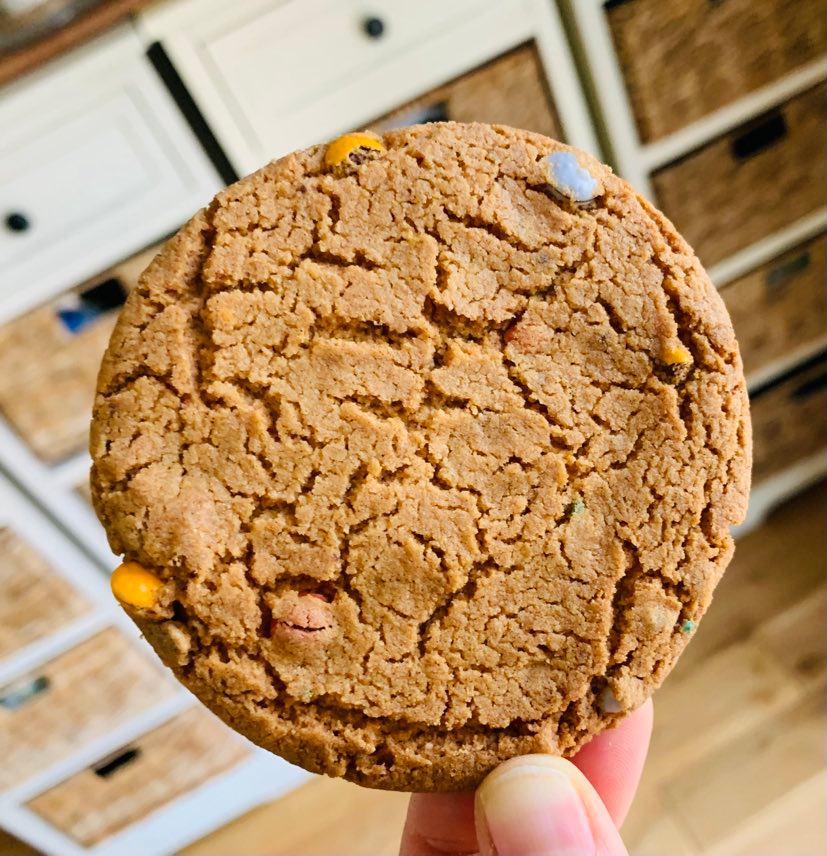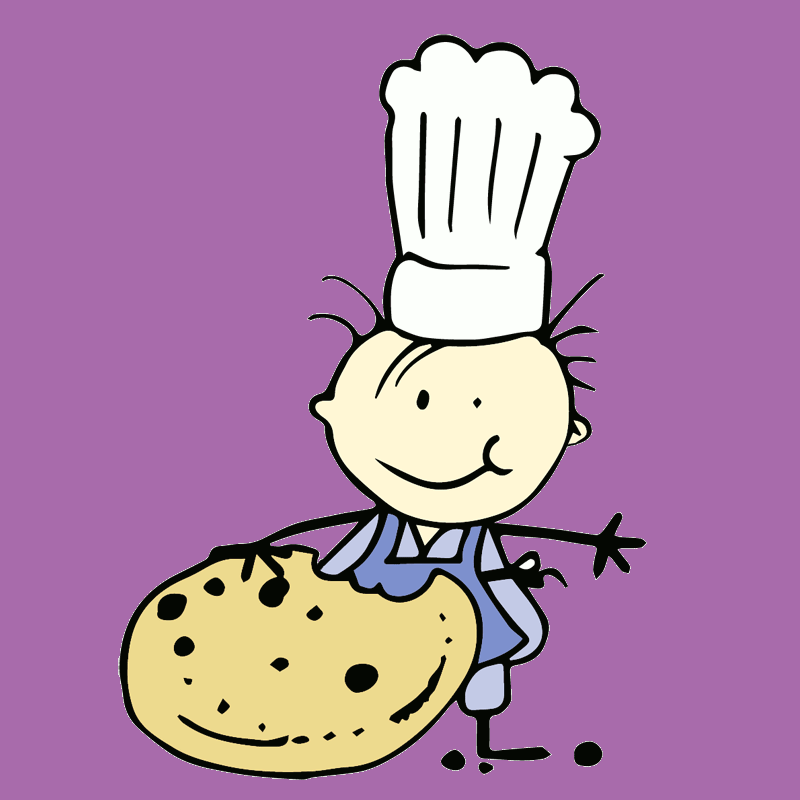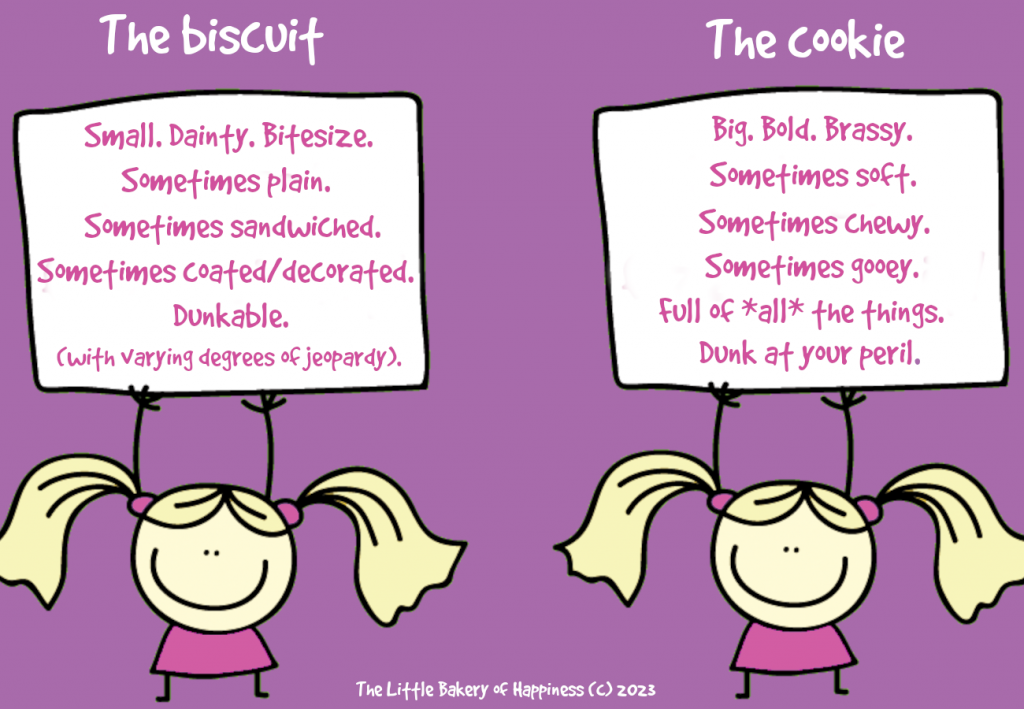What is a biscuit? When is a biscuit a biscuit and when is a biscuit not a biscuit but a cookie? What is the difference between a biscuit and a cookie? What makes a biscuit good for dunking? Indeed, should biscuits ever be dunked? So many questions!
And just to add to that list of questions, do we even care what the difference is between a biscuit and a cookie or would our time be better spent just enjoying eating them dunked (or otherwise) in cold milk or our favourite brew?
Well yes, probably. But I’m a baking geek and I let these questions get the better of me all too often, so here I am today exploring the differences between the mighty biscuit and the equally mighty cookie!

THE HISTORY OF BISCUITS AND COOKIES
To better understand what makes a biscuit a biscuit and a cookie a cookie, we need to look back at their history. Don’t worry, I’m not about to go all history teacher on you – mine removed me from the classroom on more than one occasion as a teenager and I didn’t even make it as far as GCSE. So it’s not exactly my strong point 😉
SO, ABOUT THE BISCUIT…
It has been around for, like, *forever*.
There you go, told you I wasn’t altogether all that strong on history 🙃
The word biscuit is derived from the Latin panis biscotus, which translates into English as ‘bread twice-baked.’ The early forms of biscuit were quite simply just dried-out bread (ewwww!).
If, as a baby, you ever had, or saw another infant gnawing on a ‘toothy peg’ while teething, that’s history, right there. These modern forms of rusk are not too dissimilar to those our Roman ancestors baked and ate way back when. Yeah, thanks Mum 🤣
Thankfully, in the twenty first century, we have butter and sugar and chocolate and the mighty biscuit has more varieties and flavours than you could shake a stick at.
AND WHAT ABOUT THE COOKIE?
Unlike the biscuit, whose name derives from Latin, the word cookie comes from the Dutch word koekje, which translated into English means ‘little cake’. If you’ve ever been impatient enough to try and skip the chilling phase often called for in a cookie recipe, you’ll understand its relation to cake…
Many (but not all) cookie doughs are more akin to a cake batter in consistency than a dough. They tend to be soft and require scooping or shaping by hand rather than being rollable like the often stiffer, more malleable doughs associated with biscuits.
HOW TO TELL A BISCUIT FROM A COOKIE COOKIE?
As both biscuits and cookies tend to start out in life with the same basic ingredients (sugar, flour and fat), and both are portable, handheld sweet treats, you could argue that they are one and the same thing. Indeed, Americans use the word cookie to describe any and all different types of the crunchy, soft and chewy sweet treat, but that may be in part because biscuits in the USA are a something else entirely…a baked item more akin to a British scone.
Aside from the texture of the raw dough – which tends to be on the stiffer side for biscuits and the softer side for cookies – one way to distinguish between the two is from their level of complexity.

Biscuits, on the whole, are simple sophistication baked into a teatime treat or snack to accompany a brew at any time of the day or night. They tend to be plain, crunchy and of a single flavour (think: digestives, malted milk, rich tea, ). Often they are sandwiched together with a flavoured icing and/or jam (think: custard creams, bourbons, jammie dodgers) and sometimes they are topped with chocolate or icing (think: party rings, chocolate hobnobs, Cadbury’s fingers). They rarely contain inclusions (nuts, fruit, chocolate chips and chunks).
Cookies, on the other hand, typically contain all the things. Think chocolate chips, M&Ms raisins, coconut, peanuts, marshmallows, sprinkles, honeycomb – the list goes on. Most biscuits have either a crunchy (think: gingernut) or melt-in-the-mouth (think: fruit shorties) texture, while cookies can be anything from soft, gooey or chewy to crispy and crunchy.


TO DUNK OR NOT TO DUNK?
Way back when, biscuits were made specifically for dunking. Their long thin shapes (think: biscotti, langues de chat) and robust constitution lent themselves well to being dunked into sweet wine at the end of a meal or as part of a celebratory toast.
So dunking isn’t a modern invention. What is more recent, however, is the reinvention of the biscuit as a once-baked treat, making it less robust, easier on the dentures and, ultimately, less dunkable.
Which is probably why such a fierce debate rages on whether biscuits should be dunked or not and why, for those of us who love to dunk, we are always on the hunt for the perfect dunker.

You’ll find me firmly entrenched in the dunk yourself happy camp. I love the jeopardy of dunking…wondering whether I will be able to get the biscuit from my cup to my mouth before it dissolves in a soggy heap in my lap.
I’m totally here for that 🙃
So whether you call them biscuits or cookies or flit between the two, there are a couple things that are certain about biscuits and cookies…
😍 They are both delicious. Fact.
😍 Neither requires a plate and a knife and fork before getting stuck in. Result.









